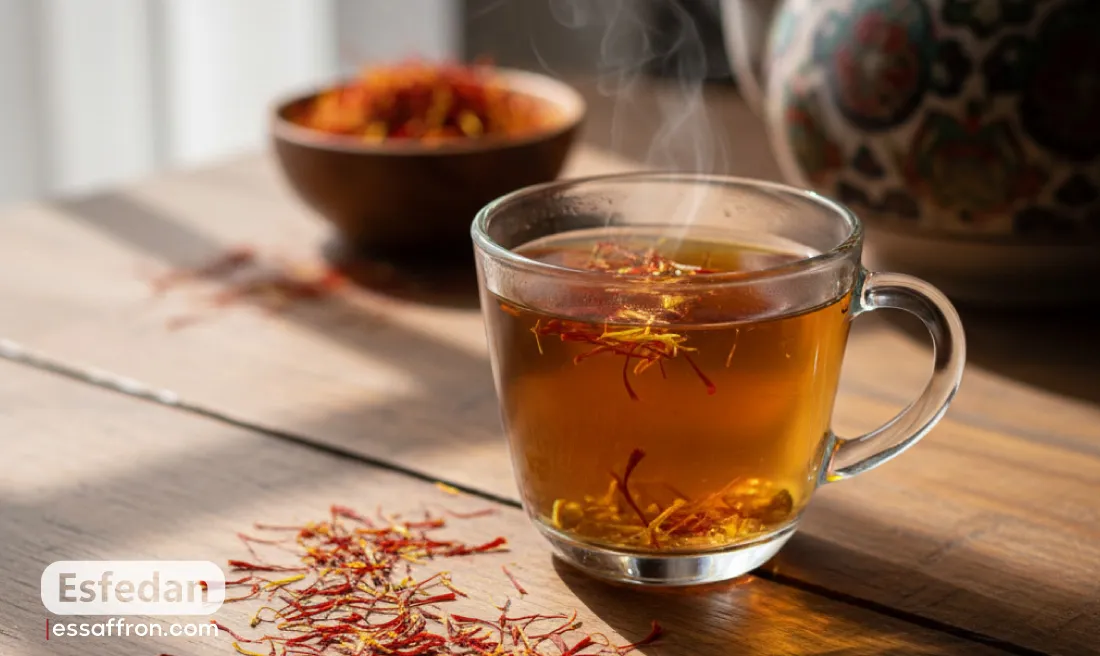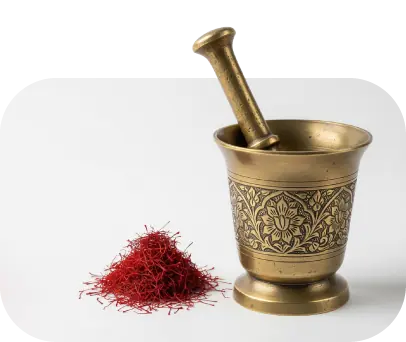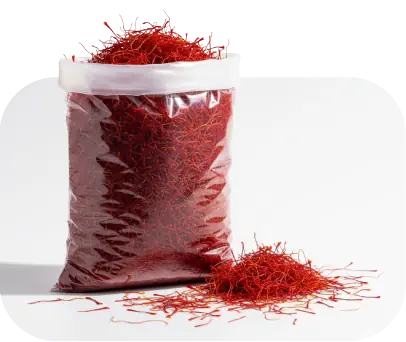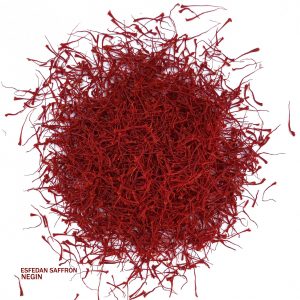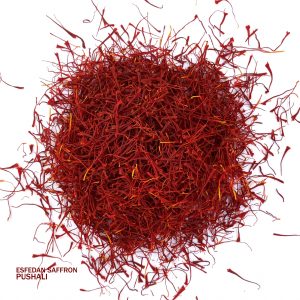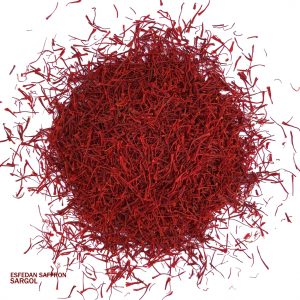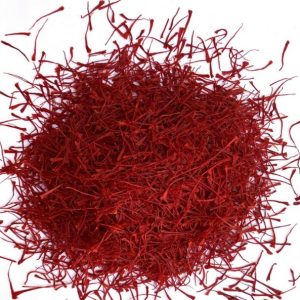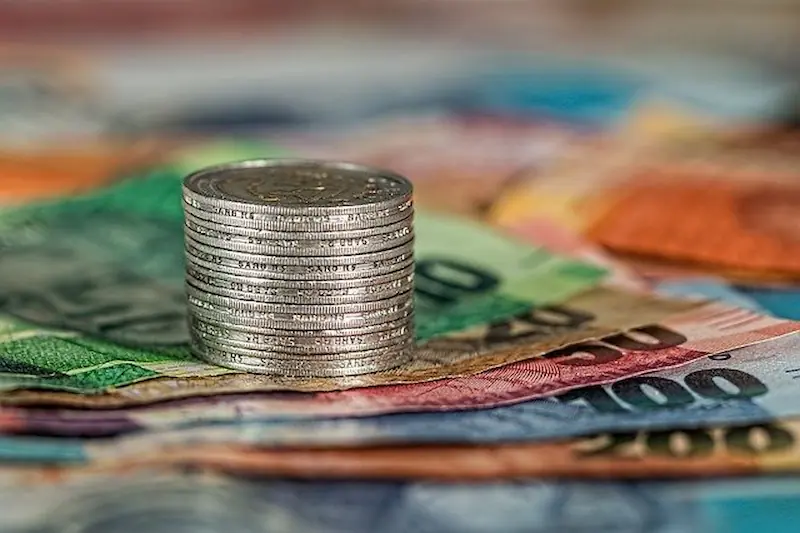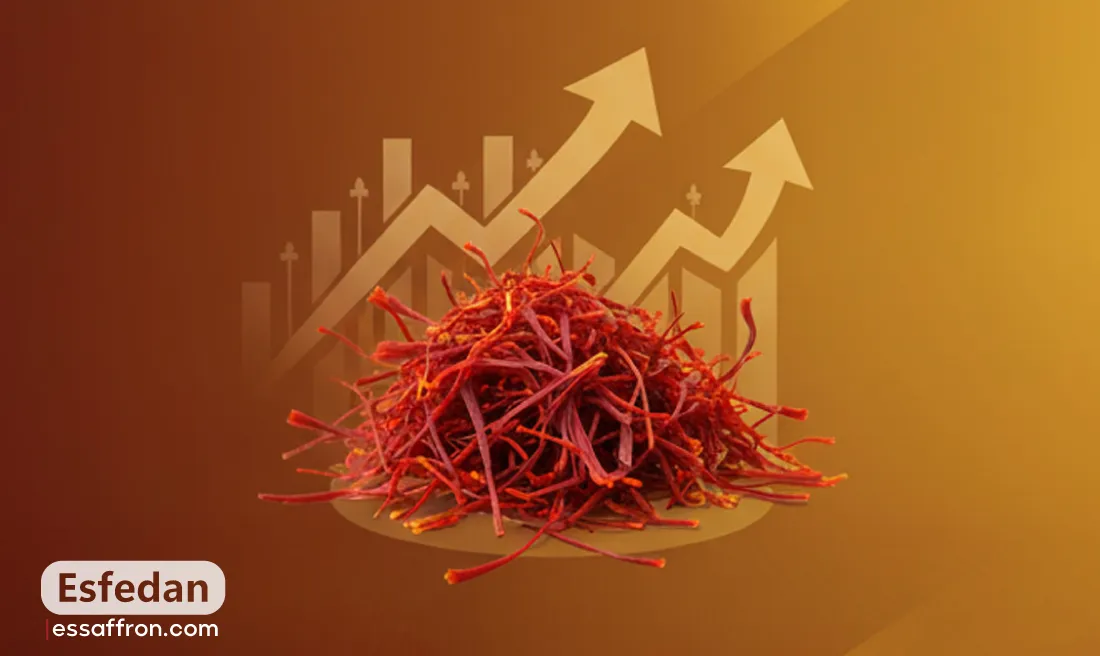As you know, saffron has countless benefits, and these saffron benefits are greatly enhanced in its tea. Saffron tea can support mood, sleep, PMS symptoms, and cognitive health, largely due to the presence of crocin, picrocrocin, and safranal. Most clinical evidence uses standardized saffron extracts (often ~30 mg/day), so tea is best viewed as a gentle, complementary option, not a medicine. See the table for what the research means in a tea cup..
Evidence-to-Saffron tea (what studies say vs what your mug can do)
| Benefit | Best human evidence | Typical extract dose in trials | What it means for tea | Evidence strength |
|---|---|---|---|---|
| Mood/stress | RCTs + 2024 meta-analysis (vs SSRIs) | ~30 mg/day for 6–8 weeks | Daily tea may help mood as a habit; do not expect capsule-level effects | High for extracts (Oxford Academic) |
| PMS relief | RCTs + up-to-date reviews | ~30 mg/day | Tea during the luteal phase may gently support symptoms | Moderate–High (extracts) (Human Clinical Studies) |
| Sleep | RCTs + recent preprint | ~14–28 mg/day (varies) | Evening tea = mild relaxant ritual | Moderate (extracts) (Healthshots) |
| Cognitive support | Systematic review of MCI/AD | ~30 mg/day | Adjunctive only; medical care first | Moderate (specific groups) (ScienceDirect) |
| Antioxidant/anti-inflammatory | Biomarker changes in trials | ~30 mg/day | Gentle daily intake; diet matters more | Moderate (Priorliving) |
| Digestive comfort | Traditional + limited data | — | May soothe; evidence emerging | Low–Moderate |
Understanding Saffron and Its Bioactive Compounds
Saffron is derived from the dried stigmas of the Crocus sativus flower and is primarily cultivated in Iran, Spain, and Kashmir. Known as red gold, its high market value stems from the labor-intensive harvesting process—thousands of delicate flowers are needed to produce just one gram of the spice. Globally, saffron is prized for its distinct aroma, unique flavor, and vibrant color, all of which are linked to its chemical composition and rich profile of bioactive compounds.
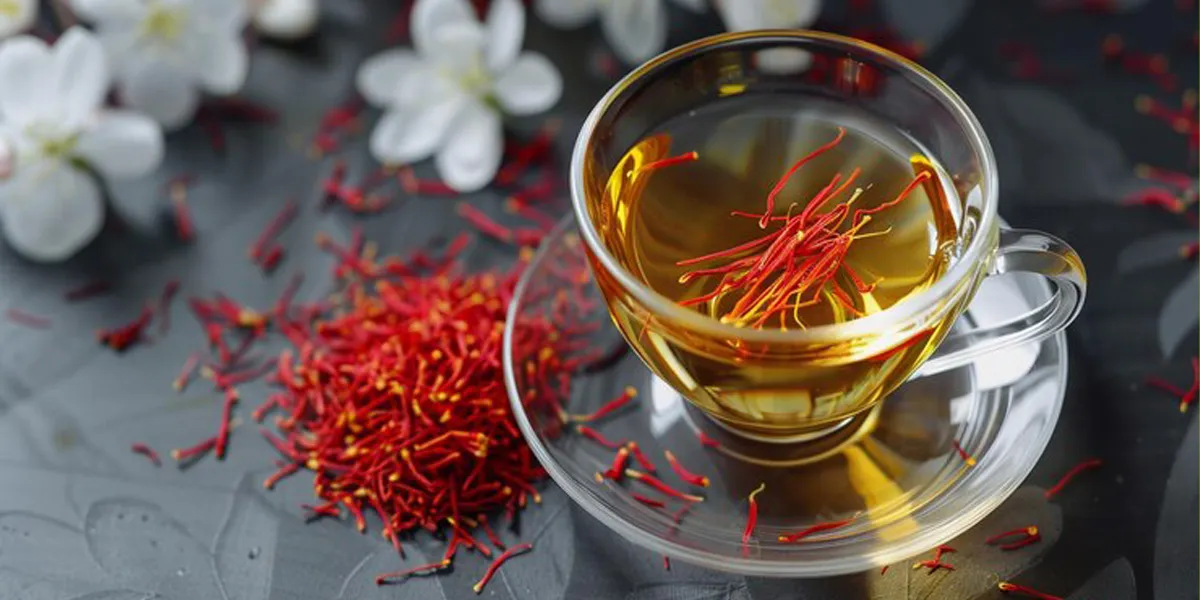
Key Bioactive Compounds in Saffron
| Compound | Function / Role | Health Benefits | Contribution to Saffron Qualities |
|---|---|---|---|
| Crocin | Water-soluble carotenoid (natural pigment) | Strong antioxidant, anti-inflammatory, neuroprotective, supports cellular health. | Gives saffron its intense yellow-orange coloring power |
| Picrocrocin | Glycoside and precursor to safranal | Aids digestion, may regulate appetite | Provides saffron’s bitter taste and is part of its flavor complexity |
| Safranal | Volatile aldehyde is formed during drying | Antidepressant, anti-anxiety, mild sedative effects | Responsible for saffron’s distinct aroma |
| Crocetin | Carotenoid derivative | Supports eye health, improves blood flow, and is an antioxidant | Works synergistically with crocin to boost coloring & health properties |
| Kaempferol | Plant flavonoid | Anti-cancer potential, antioxidant, supports immune defense | Contributes to the overall therapeutic properties |
Health Benefits of Saffron Tea
Saffron tea, a simple infusion of saffron threads in hot water, delivers a concentrated dose of these beneficial compounds. Regular consumption of saffron tea has been linked to several scientifically supported health advantages.
1. Mood Enhancement and Stress Reduction
Saffron tea demonstrates significant potential for improving mood and alleviating symptoms of stress and anxiety. Research indicates that saffron’s active compounds, particularly crocin and safranal, influence several key neurotransmitter systems in the brain. These include serotonin, dopamine, and norepinephrine pathways, which are crucial for mood regulation, motivation, and stress response. This modulation can exert antidepressant-like effects and promote a sense of well-being by impacting the brain’s emotional regulation centers.
Regular intake of saffron tea can therefore contribute to reduced feelings of anxiety, decreased irritability, and an overall improvement in mood, offering a natural approach to psychological balance. Its anxiolytic properties provide a gentle alternative for managing daily stressors without severe sedative effects, contributing to mental resilience and a more balanced emotional state.
2. Potent Antioxidant Protection
Saffron is exceptionally rich in powerful antioxidants, a property largely attributed to its primary compounds (crocin, crocetin, safranal) as well as kaempferol, a flavonoid also found in the *Crocus sativus flower petals. These compounds collectively help combat oxidative stress in the body by neutralizing free radicals. Free radicals are unstable molecules generated by metabolic processes and environmental factors, implicated in cellular damage, accelerated aging, and the development of numerous chronic diseases, including cardiovascular disease, neurodegenerative disorders, and various cancers.
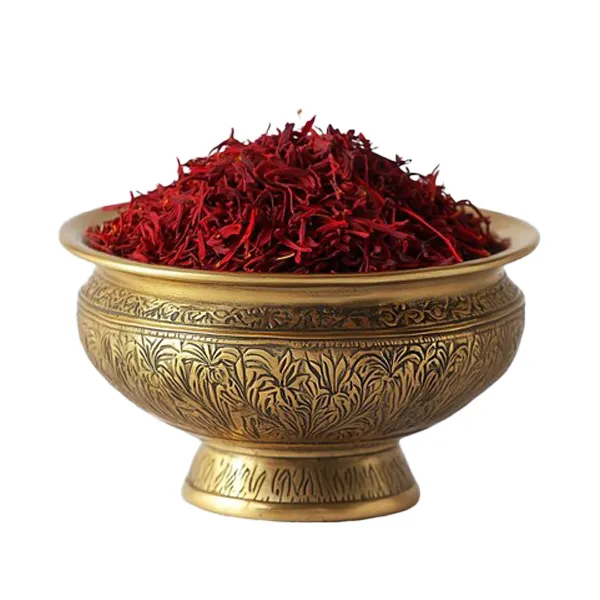
Drinking saffron tea regularly provides a beneficial and bioavailable intake of these protective compounds. This continuous antioxidant support contributes to overall cellular health, enhances cellular repair mechanisms, and helps protect against premature aging caused by environmental and metabolic stressors, thereby supporting long-term health and disease prevention. The robust antioxidant profile is a significant advantage of saffron.
3. Relief from PMS Symptoms
For women, the saffron tea benefits for women’s health are particularly noteworthy in addressing premenstrual syndrome (PMS) symptoms. Clinical studies have consistently shown that saffron can significantly reduce both the physical and psychological discomfort associated with PMS. This includes common symptoms such as irritability, mood swings, headaches, breast tenderness, abdominal pain, and depression, often experienced in the luteal phase of the menstrual cycle.
The mood-regulating and anti-inflammatory properties of saffron contribute to its efficacy in alleviating PMS. Its ability to influence neurotransmitters can help stabilize mood fluctuations, while its anti-inflammatory action may reduce physical discomfort and cramping. This makes saffron tea a valuable natural remedy for managing monthly cycles, specifically addressing the needs of those seeking the benefits of saffron tea for women without relying on pharmaceutical interventions, offering a more holistic approach to well-being.
4. Cognitive Support and Mental Clarity
Research indicates that saffron components possess significant neuroprotective properties, potentially supporting cognitive function and improving mental clarity. Crocin, in particular, has been studied for its ability to enhance memory and learning processes. It achieves this by protecting brain cells (neurons) from oxidative damage and inflammation, which are recognized as contributing factors in cognitive decline and neurodegenerative diseases like Alzheimer’s. The compounds in saffron may also facilitate nerve impulse transmission and support synaptic plasticity – the brain’s ability to strengthen or weaken connections between neurons – both crucial for optimal brain function, attention, and efficient information processing. Regular consumption of saffron tea can therefore be a beneficial adjunct for maintaining brain health, improving focus, and potentially offering support in conditions related to mild cognitive decline, enhancing overall cognitive performance and mental acuity.
5. Improved Sleep Quality and Insomnia Aid
Saffron tea may promote better sleep quality and assist individuals struggling with insomnia or restless sleep. The active compounds in saffron, notably safranal, have been observed to exert mild sedative and relaxing effects on the central nervous system. This calming action helps to reduce nervous tension, prepare the body for rest, and potentially shorten the time it takes to fall asleep by promoting a state of tranquility. By influencing neurotransmitters involved in sleep regulation, such as GABA (gamma-aminobutyric acid), saffron tea can contribute to a more restful and restorative night’s sleep without the strong sedative effects or next-day grogginess often associated with pharmacological sleep aids. Its natural calming properties make it an appealing, non-habit-forming option for improving sleep hygiene and promoting consistent, quality sleep.
6. Digestive Health Support
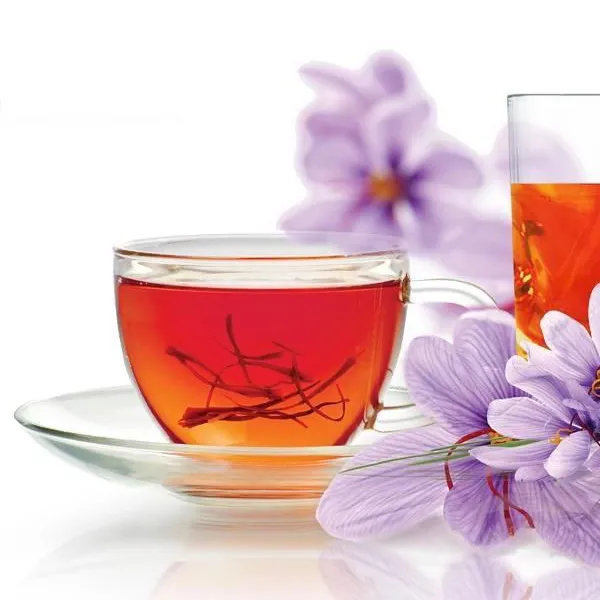
Historically, saffron has been utilized in various traditional medicine systems to support digestive health. Its observed anti-inflammatory and antispasmodic properties can help soothe the gastrointestinal tract and may alleviate discomfort associated with digestive upset, such as cramps or spasms. Saffron may also stimulate bile secretion, which is a vital component produced by the liver, essential for the digestion and absorption of dietary fats and fat-soluble vitamins.
While specific mechanisms are still under rigorous investigation, saffron’s calming effects on the gut lining and its ability to reduce inflammation may contribute to improved digestion and reduced symptoms like bloating, gas, and indigestion. Enjoying saffron petal tea can offer a gentle approach to maintaining gut comfort, promoting a healthy digestive system, and enhancing overall nutrient absorption.
7. Anti-inflammatory Properties
Chronic inflammation is a fundamental contributor to numerous chronic health conditions, including cardiovascular disease, diabetes, certain autoimmune disorders, and various forms of chronic pain. Saffron possesses strong anti-inflammatory properties, primarily attributed to its crocin and safranal content. These compounds can modulate various inflammatory pathways in the body and reduce the production of pro-inflammatory cytokines, which are signaling molecules that drive inflammation.
By actively reducing systemic inflammation, incorporating saffron tea into a daily routine may contribute to the management of inflammatory conditions and overall disease prevention. This anti-inflammatory action supports the body’s natural healing processes and contributes to overall cellular resilience and longevity, reinforcing the broad advantage of saffron in a holistic health regimen.
How to Brew the Perfect Saffron Tea: A Step-by-Step Guide
Brewing saffron tea is a simple ritual that unlocks the spice’s maximum flavor, aroma, and health benefits. Following the correct process ensures you extract all the potent compounds from the delicate threads.
Ingredients You’ll Need:
| Ingredient | Quantity/Notes |
| High-Quality Saffron | 3-5 threads |
| Hot Water | 1 cup (240 ml), just below boiling (85-90°C / 185-195°F) |
| Optional Flavorings | A touch of honey, a thin slice of lemon, or a cardamom pod |
Preparation Method:
- Bloom the Saffron: Place the saffron threads in a cup. Add one tablespoon of hot water and let it steep for 5-10 minutes. This crucial step, known as blooming, allows the threads to fully release their vibrant color, potent aroma, and beneficial compounds.
- Infuse the Tea: Pour the remaining cup of hot water over the bloomed saffron.
- Steep to Perfection: Let the tea steep for another 10-15 minutes. The longer it infuses, the stronger the flavor and the deeper the golden hue will become.
- Serve and Enjoy: You can strain the threads if you prefer, though consuming them is perfectly safe. Add honey or lemon to taste, but first, take a moment to appreciate the pure, distinct aroma of the saffron.
A Buyer’s Guide: How to Identify Authentic, High-Quality Saffron
The benefits of saffron tea are directly linked to the authenticity and quality of the spice. To ensure you are purchasing genuine red gold and not a cheap imitation, look for these key indicators:
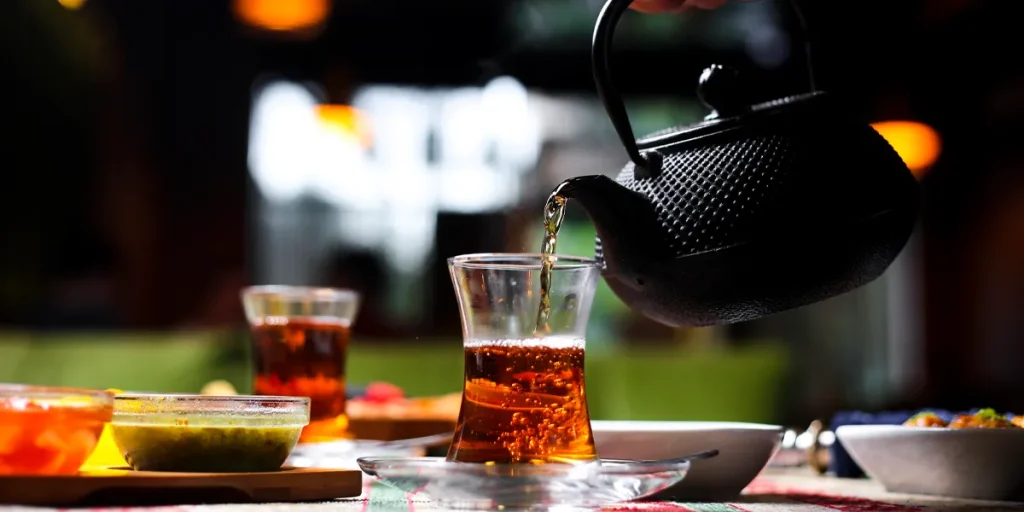
- Appearance: Authentic saffron threads are trumpet-shaped, with a deep crimson-red color and a slightly lighter orange or yellow tip where they were attached to the flower.
- Aroma: Real saffron has a strong, complex aroma often described as a mix of hay and honey. If it smells faint or metallic, it is likely low-quality.
- Color Test: Place a few threads in warm water. Genuine saffron will slowly release a brilliant golden-yellow color, while the threads themselves remain red. If the water turns red instantly or the threads lose their color, it’s a sign of artificial dye.
- Taste: High-quality saffron has a distinctive, slightly bitter flavor. If it tastes sweet, it is likely adulterated.
- Price: Be cautious of saffron that seems too cheap. Its labor-intensive harvesting process makes it the world’s most expensive spice, so an unusually low price is a major red flag for counterfeits.
Always purchase from reputable suppliers who provide certifications like the ISO 3632 standard, which scientifically grades saffron based on its crocin (color), picrocrocin (flavor), and safranal (aroma) content.
Choose a Trusted Supplier: The Esfedan Advantage
As one of the most trusted saffron wholesale suppliers in Iran, Esfedan stands out by delivering unmatched quality, strict safety standards, and full in-house control—from farm to final packaging. Our saffron boasts a coloring strength (Crocin) of over 250, ensuring superior potency and a rich, natural color that exceeds global benchmarks.
What sets us apart is our FSSC 22000-certified facility, along with two fully equipped laboratories approved by the National Standards Organization of Iran, allowing us to test every batch for purity and performance. Unlike many exporters, we offer factory-direct pricing with no intermediaries and provide full export documentation along with customized packaging solutions tailored to your market. With over a decade of international experience and a proven reputation across Europe, Asia, and the Middle East, Esfedan delivers more than saffron—we provide consistency, credibility, and compliance at scale.
Tea Saffron Dosage and Precautions
Saffron is generally safe and beneficial when enjoyed in typical culinary amounts (up to 1.5 grams per day). However, like any potent ingredient, it’s important to be mindful of dosage and potential interactions to enjoy it safely.
- The Importance of Moderation: A little saffron goes a long way. High doses, specifically those exceeding 5 grams daily, are considered toxic and can lead to serious health issues, including vomiting, dizziness, and internal bleeding. Always stick to the small amounts recommended in recipes.
- A Special Note for Pregnancy: Pregnant women should avoid medicinal or large quantities of saffron. High concentrations may stimulate uterine contractions, posing a risk of miscarriage. While a few threads in a dish are generally considered safe, it is essential to consult a healthcare professional before using saffron during pregnancy.
- Potential Medication Interactions: Saffron can interact with certain medications. If you are taking blood thinners (like warfarin or aspirin), blood pressure medication, or antidepressants, speak with your doctor before adding saffron tea to your routine, as it may alter the effects of your prescription.
- Allergies and Sensitivities: Though uncommon, allergic reactions to saffron can occur. If you experience symptoms like hives, swelling, or difficulty breathing, discontinue use immediately and consult a healthcare provider.
Conclusion: Key Insights on Saffron Tea Benefits
The 7 Benefits of Saffron Tea encompass a wide range of scientifically supported health advantages, primarily stemming from its rich composition of active compounds: crocin, picrocrocin, and safranal. From enhancing mood and supporting cognitive function to providing potent antioxidant protection, aiding digestion, relieving PMS symptoms, improving sleep quality, and offering significant anti-inflammatory effects, saffron tea stands as a valuable natural supplement.
Ensuring the use of authentic, high-quality saffron, identifiable through its appearance, aroma, taste, and reputable sourcing, is paramount to fully experiencing these `saffron tea benefits`. When consumed responsibly and in appropriate amounts, saffron tea offers a simple yet profound way to leverage the remarkable properties of this prized red gold for overall well-being. Individuals considering saffron tea for therapeutic purposes should prioritize quality and be mindful of potential interactions or contraindications, always consulting with a healthcare professional for personalized advice.


